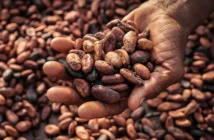|
Getting your Trinity Audio player ready...
|
The Food and Agriculture Organization of the United Nations (FAO) has reported that strong supply conditions push international commodity quotations lower except for rice and sugar International food commodity prices declined in August, led by staples other than rice and sugar.
The FAO Food Price Index, which tracks monthly changes in the international prices of globally-traded food commodities, averaged 121.4 points in August, down 2.1% from July and as much as 24 percent below its March 2022 peak.
The FAO Vegetable Oil Price Index decreased by 3.1 per cent in August, partly reversing a sharp 12.1 percent upward move in July.
World prices of sunflower oil declined by nearly 8 per cent during the month amid weakening global import demand and abundant offers from major exporters.
World quotations for soy oil dropped owing to improving soybean crop conditions in the United States of America, while those for palm oil fell moderately amid seasonally rising outputs in leading producing countries in Southeast Asia.
The FAO Cereal Price Index declined by 0.7 per cent from July.
International wheat prices fell by 3.8 per cent in August amid higher seasonal availabilities from several leading exporters, while international coarse grain prices fell by 3.4 percent amid ample global supplies of maize from a record harvest in Brazil and the imminent start of the harvest in the USA.
In stark contrast, the FAO All Rice Price Index rose by 9.8 percent from July to reach a 15-year nominal high, reflecting trade disruptions in the aftermath of a ban on Indica white rice exports by India, the world’s largest rice exporter.
Uncertainty about the ban’s duration and concerns over export restrictions caused supply-chain actors to hold-on to stocks, re-negotiate contracts or stop making price offers, thereby limiting most trade to small volumes and previously concluded sales.
The FAO Dairy Price Index declined by 4.0 per cent from July, led by international quotations for whole milk powder, in abundant supply from Oceania.
International butter and cheese prices also dropped, due in part to lackluster market activities associated with the summer holidays in Europe.
The FAO Meat Price Index dipped by 3.0 per cent. World ovine prices fell the most, underpinned by a surge in export availabilities mainly from Australia and weaker demand from China.
Robust supplies also nudged downwards the prices of pig, poultry and bovine meats.
The FAO Sugar Price Index rose by 1.3 percent from July, averaging in August as much as 34.1 per cent higher than its value a year ago.
The increase was mainly triggered by heightened concerns over the impact of the El Niño phenomenon on sugarcane crops, along with below-average rains in August and persistent dry weather conditions in Thailand.
The large crop currently being harvested in Brazil limited the upward pressure on international sugar quotations, as did lower ethanol prices and the weakening of the Brazilian Real.
FAO also released a new Cereal Supply and Demand Brief, which forecasts that world cereal production in 2023 will increase by 0.9 percent from the previous year to reach 2 815 million tonnes, on par with the record output realized in 2021.
Source: myghanadaily





